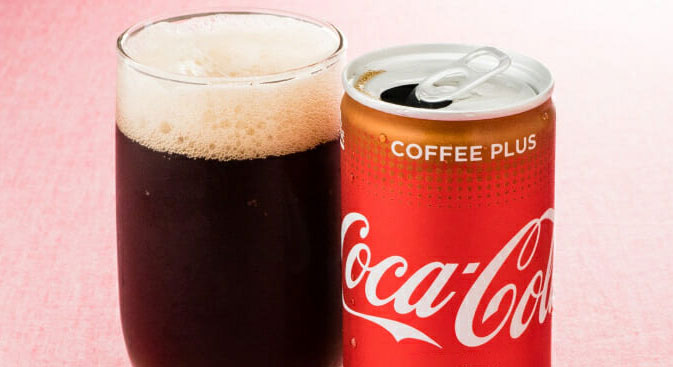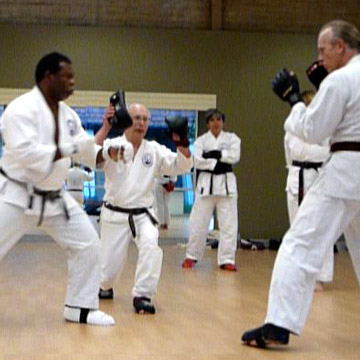A Case for Failure
Not too long ago I was in the break-neck-paced and ego-driven world of advertising. It was essentially Yoga's bizzaro world — a place where everything was inverted, backwards to how I now see the world.
But there's a place where the 2 worlds of Yogic Philosophy and Marketing collide…
In an unremarkable business park near Ann Arbor Michigan stands a poignant reminder to humanity's shattered dreams. From the outside it looks like a car dealership — because that's what it was. Now it goes by the enigmatic name: Custom Research North America.
If you get inside as the public rarely do, it takes awhile for your eyes to adjust to what you're seeing. You find yourself in what appears to be a haphazardly organized supermarket. It contains no shoppers but along every aisle the grey metal shelves are crammed with thousands of packaged food and household products.
Unlike a real supermarket there is only one of each item.The more important point about the products on the shelves, is that they're not found on the shelves of any actual supermarkets today. These are all failures — products withdrawn from the shelves after a few weeks or months because nobody wanted to buy them. This storehouse of fiascos has been nicknamed "The Museum of Failed Products". It's consumer capitalism's graveyard, the shadow-side to the relentless upbeat, success-focused culture of modern marketing.
Here you'll find Clairol's Touch of Yogurt Shampoo, Gillette's equally unpopular "For Oily Hair Only", a few feet from a can of Coffee Plus Breakfast Cola (featured image). There's discontinued caffeinated beer and self-heating soups that had the regrettable tendency to explode in customer's faces, packets of breath mints that had to be withdrawn because they looked like tiny packages of crack cocaine dispensed by America's street dealers. It's where microwavable scrambled eggs — pre-scrambled and pre-packaged in a cardboard tube with a pop-up mechanism for easy consumption — go to die.
There's a wonderful Japanese term, "mono no aware" which translates roughly to "the pathos of things". It captures the melancholy of life's impermanence — that additional beauty imparted to Cherry blossoms, or cloud formations, or human features and their inevitably fleeting time on earth. It's the way I felt when I looked at the carton of Morning Banana Juice, and a packet of Fortune Snookies, a short-lived line of fortune cookies for dogs.
Every failure embodied a story of sincere efforts on the part of designers, salespeople, product managers and advertisers. Real people who had their mortgages, car payments and family holidays riding on the success of Touch of Yogurt or Fortune Snookies.
However, there's a 3 word truth: "Most products fail", according to some estimates the failure rate is as high as 90 percent. However, walking the aisles it's amazing the Museum of Failures exist at all. You would assume any product manufacturer worthy of it's name would have it's own such collection, a carefully stewarded resource to help avoid repeating errors it's rivals had already made. But this rarely happens. Companies are focused on their next hoped-for success, and are unwilling to think of past failures.
Failure and our fraught relationship is the theme of today's workshop. It's the thing that the culture of positive thinking strives at all costs to avoid. Today, critics of goal-setting are proposing a new attitude towards failure — a trial and error approach with rapid prototyping that requires frequently willing to fail.
Yoga points to an even deeper kind of failure, and ultimately liberating — the failure of the ego's effort to maintain its separation and security.
One reason to turn towards failure is that our efforts not to think about failure leave us with a severely distorted understanding of what it takes to be successful.
Another reason is that an openness to the emotional experience of failure can be a stepping-stone to a much richer kind of kindness. But truly embracing failure requires a shift in perspective far greater than most pay lip-service too.
Our resistance to thinking about failure is especially curious in light of the fact that failure is so ubiquitous. In his book "Why Most Things Fail" Paul Ormerod writes: We think of evolution as survival and adaption, but it makes equal sense to think of it as a matter of not surviving and not adapting. Evolution itself is driven by failure, of all the species that have ever existed fewer than 1 percent of them survive today. Most find this notion appalling and we'll go to enormous lengths to avoid thinking about it. We are so naturally skilled at editing out our failures to retain a memory of our actions that is vastly more flattering than the reality.
Like product Managers with failures stuffed into a bedroom closet, we will do anything to tell a success-based story of our lives. This leads to the entertaining psychological phenomenon know as illusory superiority. This mental glitch explains why for example, the vast majority of people tell researchers that they consider themselves to be in the top 50% of safe drivers—even though they couldn't possibly all be.
In the book "What Whey Thinking" it describes a collective unwillingness in companies to face up to failure, often more money gets poured into a doomed product to spare the company from total humiliation, and little energy will have been dedicated to examining what went wrong.
The first problem with our reluctance to think about failure — whether our own or other people's — is that it leads to an utterly distorted picture of the causes of success. Take gambling for example. We understand winning at roulette is a matter of chance, and that probability dictates that winning streaks will sometimes occur. However, losing steaks are more common… Focusing solely on success leads us badly astray.
But a deeper counterintuitive possibility is that there is happiness to be found in embracing failure, not just as a path to success — that welcoming it might simply feel better than perpetually struggling to avoid it. There is an openness and honesty to failure, a down-to-earth confrontation with reality that is lacking at the higher altitudes of success.
To be impressed by something implies feeling yourself be in the presence of something different from, and better than yourself. Failure by contrast, collapses these boundaries, demonstrating the fallibility of those who might otherwise try to present themselves as immune to defeat. It cuts people down to human size. The vulnerability revealed by failure can nurture empathy and communality.
Still, it can be exceptionally hard to adopt this attitude towards your own failures. We alight on some desired outcome — being happily married, or finding fulfilling work. We elevate into a feeling we must attain, so failing at it becomes not just sad but catastrophic. We become attached to success.
To embrace the experience of failure, not merely to tolerate it allows us to abandon the constant straining of never putting a foot wrong. We see and feel things as they really are, only then we can drop through to a more authentic self.
It's the opposite of Perfectionism which is fear-driven, striving to avoid the experience of failure at all costs. It's an exhausting and permanently stressful way to live. To fully embrace the experience of failure, not merely to tolerate it as a stepping-stone to success, is to abandon the constant straining never to put a foot wrong. It is to relax. It brings us to the ground, facing the nitty-gritty. Things as they are without the glitter. Success cannot last forever. Everyones time runs out — we have to crash. Only then can we drop through to a more authentic self. It's a boundless surrender. Nothing to hold on to, and nothing to lose.
In his book "The Importance of Living, (a 1937 Best seller) Lin Yutang writes: "Very much contented am I to lie low, to cling to the soil, to be of kin to the sod. My soul squirms comfortably in the soil and sand and is happy. When one is drunk with this earth there spirit seems so light they think they are in heaven."
By John Johnson, (C-IAYT)











